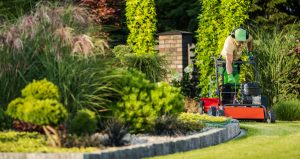
In the world of outdoor gardening and landscaping, few elements add as much dynamic flair and versatility as ornamental grasses. These often-overlooked botanical gems provide texture, movement, and year-round interest in gardens of all shapes and sizes. Whether you’re cultivating a modern landscape or a wild and rustic garden, ornamental grasses can be a game-changing addition. They bring structure without rigidity, movement without chaos, and a serene presence that invites a closer connection to nature.
A Symphony of Textures
One of the most compelling attributes of ornamental grasses is their ability to introduce a rich tapestry of textures to the garden. The slender, arching blades can range from feather-soft to rigidly structured, offering endless possibilities for contrast and complement. Whether paired with bold, broad-leaved plants like hostas or nestled next to the delicate lace of ferns, ornamental grasses serve as a versatile bridge between different forms of plant life.
Grasses such as Blue Fescue (`Festuca glauca`) provide a fine, almost prickly texture that contrasts beautifully against the rounded leaves of nearby shrubs. Meanwhile, the graceful weeping of Japanese Forest Grass (`Hakonechloa macra`) can soften the hard edges of garden paths or stone walls. By experimenting with different combinations, gardeners can create a rich quilt of forms that captivate the eye and invite exploration.
The Dance of Movement
Beyond their textural advantages, ornamental grasses are unrivaled in their ability to bring movement and a sense of life to the garden. As the wind sweeps through their blades, they dance with a gentle sway that captures light and shadows in a mesmerizing display. The kinetic energy they provide is a continual reminder of the garden as a living entity, ever-changing and full of vitality.
This movement can be particularly striking in open spaces where the grasses are free to sway unhindered. Larger species such as Miscanthus (`Miscanthus sinensis`) and Pampas Grass (`Cortaderia selloana`) can create dramatic, wind-sculpted backdrops or screens in the garden. These grasses not only enhance visual interest but also add an auditory dimension as their rustling leaves create a natural soundtrack to garden life.
Color and Seasonal Interest
Ornamental grasses also offer a diverse palette of colors that enhance garden aesthetics throughout the year. Their hues can range from the silvery-blue tones of Blue Oat Grass (`Helictotrichon sempervirens`) to the rich burgundy of Purple Millet (`Pennisetum glaucum`), providing options for virtually any garden theme or color scheme.
Throughout the changing seasons, ornamental grasses undergo transformations that keep the garden vibrant and engaging. In spring and summer, they boast fresh, lively foliage. As autumn arrives, many turn to warm shades of amber, gold, and rust, complementing the fiery tones of deciduous trees. Even in winter, grasses hold interest as their seed heads persist and blades catch the frost, creating a stark and striking effect against the barren landscape.
Sustainability and Low Maintenance
For the eco-conscious gardener, ornamental grasses are often a sustainable and practical choice. Many species are drought-tolerant and require minimal upkeep compared to traditional lawn grasses or high-maintenance perennials. This makes them well-suited to modern gardening trends that emphasize low water usage and reduced chemical dependency.
Once established, ornamental grasses require little more than occasional pruning to remove dead foliage and encourage new growth. They are generally resistant to pests and diseases, meaning less time spent on interventions and more time enjoying your garden oasis.
Designing with Ornamental Grasses
Incorporating ornamental grasses into your garden design requires thoughtful consideration of space, scale, and harmony. Start by assessing the existing landscape and identifying areas where grasses can serve both functional and aesthetic roles. For example, taller varieties might form natural borders or windbreaks, while lower-growing species can edge pathways or fill open spaces with visual interest.
Consider their growth habits and mature size when selecting species, ensuring they won’t overwhelm other plants. Follow the principle of planting in odd numbers to create natural-looking groupings that blend seamlessly into the environment.
For a contemporary look, combine ornamental grasses with hardscape elements like gravel, stone, or metal features. In more traditional settings, they work well alongside cottage garden favorites such as lavender or roses, where their subtle movement and muted tones complement rather than compete with vivid blooms.
Intricacy and simplicity coexist within the world of ornamental grasses, offering gardeners an array of options to craft spaces that speak to their unique style and preferences. As the grasses take root and flourish throughout the seasons, they teach us to appreciate the rhythms of nature and the boundless creativity of garden design.
By embracing the myriad textures, colors, and movements of ornamental grasses, we not only enhance our outdoor sanctuaries but also enrich our connection to the natural world. In doing so, we celebrate a style of gardening that relishes in diversity and embraces the beauty of every passing breeze.













